Top 7 Azure Monitoring Tools In 2023
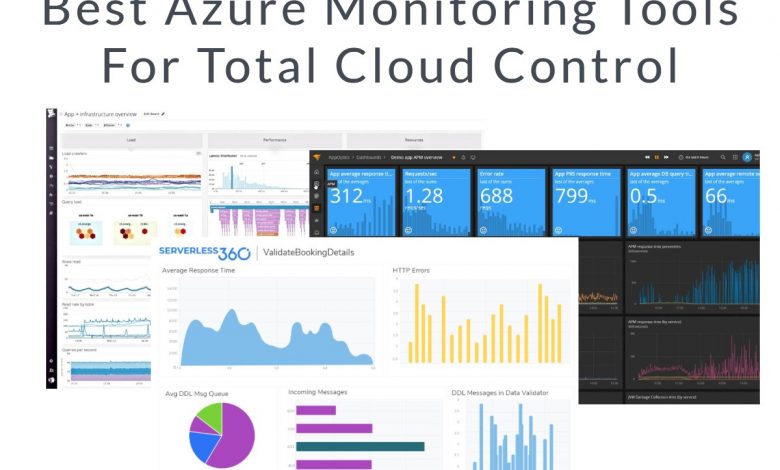
The Azure Monitoring tool is the app that lets you do centralized monitoring, see what’s going on in your apps, and add more security. These tools put together Azure services from different subscriptions and regions in a way that makes sense. They allow server less applications to be seen. With Azure Monitoring tools, you can find out how your apps are doing.
Azure Monitoring Tools
End-to-end monitoring is done by the Azure Monitoring tool, which also looks for problems in applications or infrastructure. It can run in virtual machines or containers and manage Azure. It can find bottlenecks and gather information about various other tasks.
List Of Azure Monitoring Tools
Here are some of the most widely used Azure Monitors:
#1) Serverless360 (Best Overall)
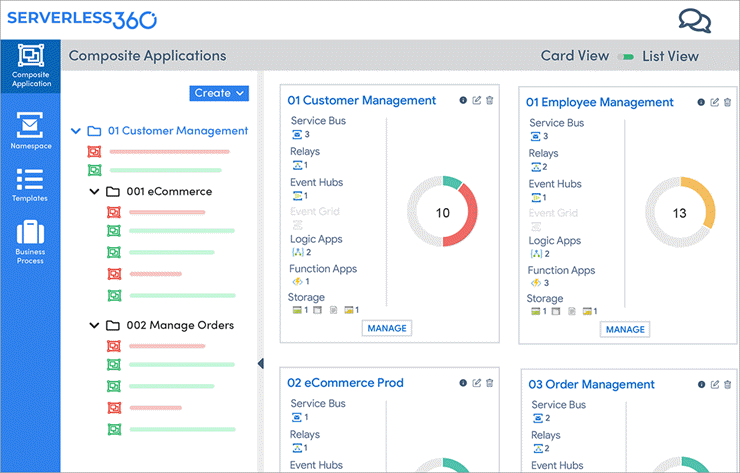
Serverless360 is the best way to run and support serverless resources in Microsoft Azure.
Serverless360 offers monitoring and management services for Azure serverless. It gives you a single place to keep track of your serverless integration solutions. The solution provides increased safety for Composite Applications by integrating Azure Active Directory and allowing for the design of fine-grained user access policies, as well as providing for their control and auditing.
It has popular notification channels built in, like Slack, PagerDuty, Microsoft Teams, etc. It has a variety of monitors that product managers can use, DevOps teams, architects, and anyone else who needs to find problems quickly. Serverless360 has threshold monitors that work like Autocorrect on resource state.
Features:
- Monitoring Azure resources and sending alerts about them work well together.
- The Composite Application feature allows you to group Azure resources from different resource groups, subscriptions, and regions into a single dashboard.
- BAM to be able to track business transactions from beginning to end.
- Use Cloud Docs to turn your Microsoft Azure subscription cost and resource information into documentation that is easy to read.
- Use the Azure Service map to see the whole architecture of your application and help track down the problem.
- Azure Service Bus can handle message processing.
- Serverless360 is a tool for keeping an eye on serverless applications. With this tool, you can get a report on the status of all the entities in an application in one place. It can keep an eye on many different kinds of entities at once. Serverless360 will keep an eye on multiple metrics for each entity.
Price: You can try Serverless360 for free for 15 days. For the Enterprise plan, you can get a quote.
#2) Site24x7
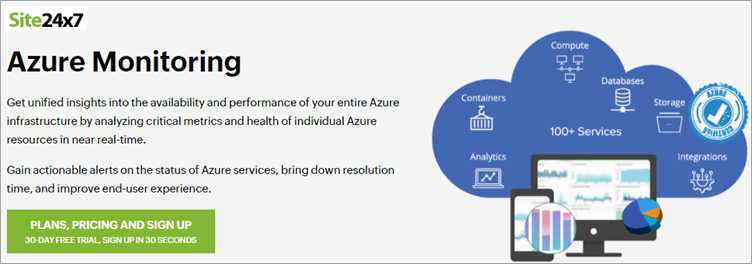
Site24x7 keeps your Azure infrastructure and applications running smoothly.
Features:
- Over 100 services are monitored, including VMs, Kubernetes, App Service, Event Hubs, and SQL databases.
- Azure finds one-step authentication and your entire environment.
- A unique Azure VM addon provides over 60 performance metrics for Windows and Linux VMs in the Azure marketplace.
- Azure service cost-cutting, performance, and security tips.
- To cut down on MTTR, a system automatically fixes problems across all cloud resources.
- Strong AI-based forecasting engine to anticipate resource shortages and avoid problems.
#3) Application Insights
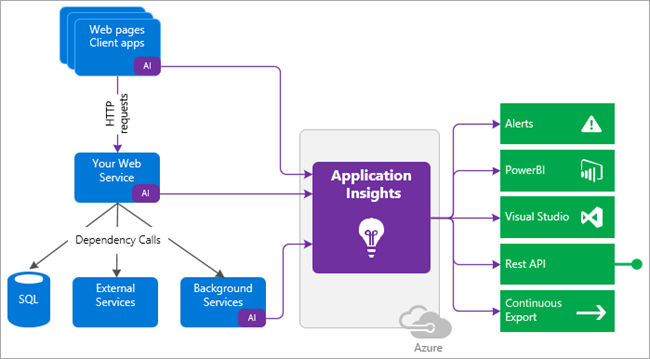
Best for keeping an eye on live apps.
The Azure Monitor comes with a feature called “Application Insights.” It will help you keep an eye on your live apps. Performance problems will be found on their own. It can be linked to Visual Studio App Center so that telemetry from mobile apps can be tracked and analyzed.
Features:
- Application Insights is a powerful analytics tool that can be used to find out what’s wrong.
- It works with apps built on many different platforms, such as.NET, Node.js, Java, etc., and is hosted on-premise, in a hybrid cloud, or in any public cloud.
- It can be put into your DevOps workflow.
- It has places where different development tools can connect.
- Application Insights can instrument the web service application, background components, and JavaScript in the web pages. It can run anywhere, so you don’t have to host it in Azure. It can be used by installing the SDK or turning on Application Insights through the Application Insights Agent if supported.
Price: The amount you pay for Application Insights will depend on how much telemetry data your apps send and how many web tests you choose to run. The Azure monitor costs a minimum of $219.52 daily for 100 GB of data. You can start with Azure Monitor for free.
#4) Azure Monitor
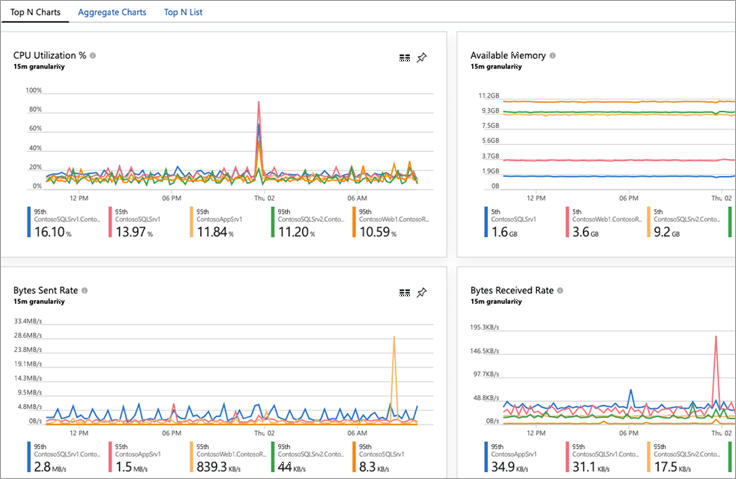
Best if you want to see everything going on in your applications, infrastructure, and network.
Azure comes with some tools for management and governance that are built in. With these tools, you’ll be able to take care of and protect your hybrid cloud resources. One of these tools is Azure Monitor. It is a platform for keeping track of the health and dependencies of your Linux and Windows virtual machines (VMs) on a single map.
Features:
- It works well and costs as little as possible.
- It has an advanced analytical engine, an interactive query language, and machine learning constructs already built in.
- It can work with popular DevOps, issue management, IT service management, security information, and event management tools.
- It works with well-known languages like .NET, Java, and Node.js.
- Databases, Azure Storage, Kubernetes Service, and virtual machines. It maximizes app performance and availability. It predicts issues.
Price: An Azure monitor is free to use to get started. For 100 GB per day, the price starts at $219.52 per day.
#5) Service Bus Explorer
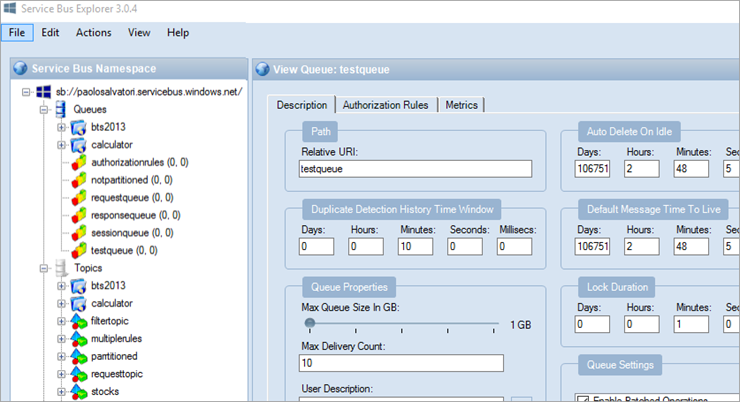
Best for managing messaging entities and connecting to a Service Bus namespace.
The service for delivering information is the Microsoft Azure Service. It will make it easier to talk to each other. Azure Relay and Service Bus Messaging are the two types of messaging patterns used with the Service Bus.
Features:
- The Service Bus Explorer provides access to a variety of advanced features, including the capacity to import and export data.
- Service Bus Explorer is the tool that can be used to manage the Azure Service Bus.
Cost: nothing.
#6) Cerebrata
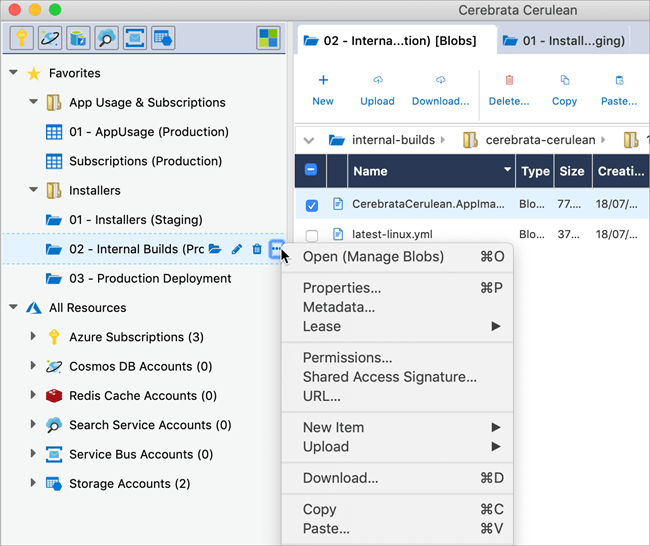
The best way to manage a lot of Azure Services.
It lets you add resources to your list of favorites. You can open your favorite resources in either a “read-only” or “read-write” mode so that you don’t delete or change anything by accident.
Features:
- It has tools for managing databases, containers, stored procedures, triggers, user-defined functions, and more.
- It has a user interface or console that you can use to manage your Redis Cache databases and keys.
- It will also let you do basic things with the accounts to manage them.
- You will be able to control how your accounts store blobs, files, queues, and tables.
- You can add resources to a list of favorites in Cerebrata, so they are easy to find without going through the resource hierarchy. It will let you decide who has access to what resources. It gives you a feature that gives a resource a familiar name.
- It’s a platform that can be changed in many ways. Businesses of all sizes can use it.
Price: There are two professional plans for Cerebrata: the Individual plan, which costs $39 per user per month, and the Enterprise plan, which costs $99 per user per month.
#7) CloudMonix

Best for automation and monitoring.
CloudMonix is a tool for keeping track of resources in the cloud and on-premises. It will keep an eye on how well it works and if it is available. It will tell about problems with production. Also It gives you the tools and features to automate recovery procedures and automatically scale up or down resources in real time. Thanks to its live dashboards, you will be able to see all of your systems and resources in one place.
Features:
- CloudMonix gives you immediate and in-depth information about how stable complex software systems are. It has dashboards for alerts, dashboards for status, dashboards for performance, and so on.
- You can make recovery procedures run independently by standard scripting solutions to production problems.
- It can work with software from other companies, making operations run more smoothly.
- The DevOps team can see how resources are being used, how well applications are running, and how well operations are running as a whole.
- CloudMonix is a tool that MSPs, CSPs, and DevOps can use. It offers automation, easy onboarding, and support for more than one customer. It can do more monitoring and has automated self-healing and auto-scaling. It has features that make it easy to report.
Price: You can try it out for free. CloudMonix has three different pricing plans: Free Starter. Professional costs $15 per resource per month, and Ultimate costs $20 per resource per month.
Conclusion
The Azure Monitoring tools offer intelligent solutions and centralized monitoring. It keeps track of business activity. By using these solutions, business applications will be better managed. The best Azure Monitoring tools we know of are Serverless360, Application Insights, Azure Monitor, and Service Bus Explorer.
Overall, Serverless360 is the best tool for managing and keeping an eye on your Azure Serverless Components. Serverless360 prevents message loss and provides aggregated monitoring reports on all application elements. Serverless360 surpasses Service Bus Explorer.




